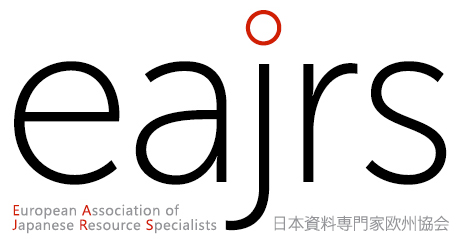国立歴史民俗博物館(歴博)の「総合資料学の創成」では、多様な「モノ」資料を時代・地域・分野等によって分類し、分野を超えた視点から統合的に分析することで、高度な共同利用・共同研究へと結びつけます。日本の歴史資料の活用による、人文学・自然科学・情報学の分野を超えた新たな日本史像の構築、学問領域の創成を目指しています。今回は,総合資料学の実践的取り組みと,関連プロジェクトについてご紹介します。
・ 総合資料学プロトタイプシステムの開発
総合資料学プロジェクトの中核をなす,現在開発中の資料情報公開プロトタイプシステムのデモを実施します。このシステムは,博物館や大学に収蔵された,さまざまな目録情報から成る資料データを柔軟に格納し,相互につながったLinked Dataとして提供するものです。IIIF(画像データ相互運用のための国際規格)に対応し,複数の機関が提供する画像の同時閲覧を可能にするビューワも備えています。
・ 地域資料のLinked Data化
プロトタイプシステムの利用の例として,(1)歴博館蔵資料,(2)地域の博物館資料,(3)歴民カード(1970年代に文化庁の主導で収集された全国の文化資料目録),(4)地名辞書といった複数のデータソースを,Linked Dataのしくみを駆使して相互に連携させ,情報発見と多面的な資料情報の把握につなげる手法を紹介します。
・ 「みんなで翻刻【地震史料】」
将来,総合資料学と連携する可能性のあるプロジェクトとして,歴史災害史料の市民参加型翻刻プラットフォーム「みんなで翻刻」(https://honkoku.org/)を紹介します。このシステムは京都大学古地震研究会により開発・運営されるものです。少数の専門家では対応できない大量の前近代の災害記録を,多数の市民の力を借りて一挙に翻刻し,防災研究の基礎データ整備に繋げることを目的にしています。2017年1月のシステム公開後,半年間で約3,000人がプロジェクトに参加登録し,史料画像3700枚,文字数にして236万文字が翻刻されました。
“Integrated Studies of Cultural and Research Resources” at the National Museum of Japanese History in Japan (NMJH) approaches Japanese historical resources through interdisciplinary studies in the humanities and sciences using information infrastructure. Classifying various cultural and research materials by time periods, regions, and research fields and analyzing them with an interdisciplinary scope can lead to more advanced sharing of infrastructure and additional cooperative studies. Here, we show the current practical approaches in this project and the relevant project.
・ Developing a prototype system in the Integrated Studies of Cultural and Research Resources
In this workshop, we demonstrate our prototype system that enables access to resource information in Japan as the core information infrastructure in this project. This system flexibly contains resource data consisting of various resource information at museums and universities in Japan and provides these data as Linked Data, connected mutually. It also connects to image data in relevant local and international institutes using the IIIF (International Image Interoperability Framework).
・ Linked Data for regional resources
As a case study of our prototype system, we show methodologies to interconnect the following multiple data sources using Linked Data for finding and understanding resource information multilaterally: (1) NMJH’s resources, (2) resources of local museums, (3) Japanese historical and folklore survey cards (cultural resource catalogues in Japan, developed by the Japanese government’s Agency for Cultural Affairs in the 1970s), and (4) a digital dictionary of historical geographical names composed by the National Institutes for the Humanities in Japan (NIHU).
・ "Minna de Honkoku" (historical resources on earthquakes in Japan)
As another relevant project, we introduce the grass-roots crowd-sourced transcription (honkoku) platform for studying resources on historical disasters: “Minna de Honkoku” (https://honkoku.org/). This system is developed and administered by Kyoto University’s Society for Historical Earthquakes. It aims to transcribe numerous records on historical disasters, which a limited number of researchers are unable to cover sufficiently, with the help of a large number of citizens. It also enables the consolidation of basic data in disaster prevention research. After the system started operating in January 2017, in just over six months, approximately 3,000 people registered this project, and 3,700 images and 2.36 million letters have been already transcribed.
